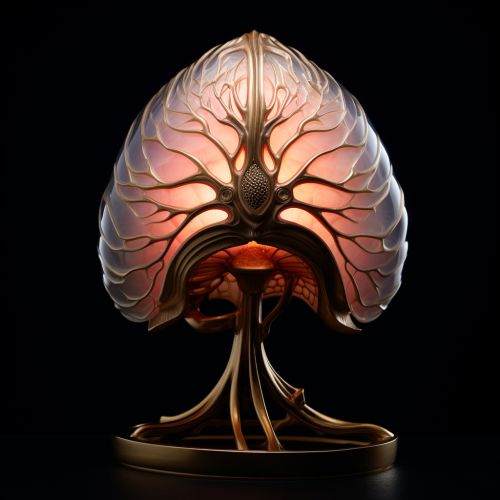Pineal Gland
Anatomy and Location
The pineal gland, also known as the pineal body, conarium, or epiphysis cerebri, is a small endocrine gland in the vertebrate brain. It is located near the center of the brain, between the two hemispheres, tucked in a groove where the two halves of the thalamus join. The gland is reddish-gray and about the size of a grain of rice (5–8 mm) in humans.


Function
The primary function of the pineal gland is to produce melatonin. Melatonin is a hormone derived from tryptophan that plays a crucial role in the regulation of sleep-wake cycles, also known as circadian rhythms. The synthesis and release of melatonin are stimulated by darkness and inhibited by light.
Histology
Histologically, the pineal gland is composed of "pinealocytes" and glial cells. Pinealocytes are the majority cells of the pineal gland. They produce and secrete melatonin. The pinealocytes can be stained by special silver impregnation methods. Their cytoplasm is lightly basophilic. With special stains, pinealocytes exhibit a characteristic water-clear appearance. A pinealocyte is a cell that is a part of the epithelium on the surface of the brain and the retina.
Evolution
The pineal gland has been a subject of much interest and speculation for centuries. René Descartes, who dedicated much time to the study of the pineal gland, called it the "principal seat of the soul." He believed it to be the point of connection between the intellect and the body. Descartes attached significance to the gland because he believed it to be the only section of the brain to exist as a single part rather than one-half of a pair.
Clinical Significance
The function of the pineal gland can be disrupted by calcification, which can lead to a variety of disorders such as sleep disorders, psychiatric disorders, and certain types of cancer. Calcification of the pineal gland is significantly higher in Alzheimer's disease patients compared to other types of dementia.
